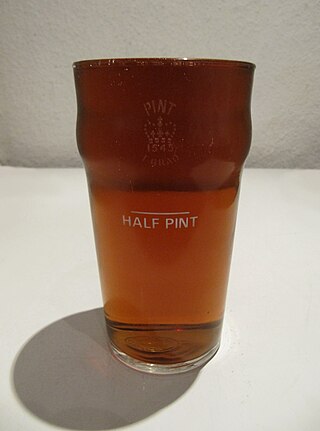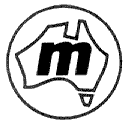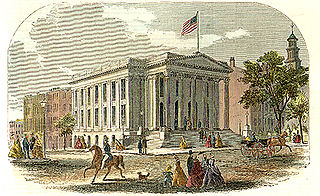Related Research Articles

The imperial system of units, imperial system or imperial units is the system of units first defined in the British Weights and Measures Act 1824 and continued to be developed through a series of Weights and Measures Acts and amendments.

Metrication or metrification is the act or process of converting to the metric system of measurement. All over the world, countries have transitioned from local and traditional units of measurement to the metric system. This process began in France during the 1790s, and is still continuing more than 200 years later, with the modern International System of Units, as the metric system has not yet been fully adopted in all countries and areas.

The pound or pound-mass is a unit of mass used in British imperial and United States customary systems of measurement. Various definitions have been used; the most common today is the international avoirdupois pound, which is legally defined as exactly 0.45359237 kilograms, and which is divided into 16 avoirdupois ounces. The international standard symbol for the avoirdupois pound is lb; an alternative symbol is lbm, #, and ℔ or ″̶.

United States customary units form a system of measurement units commonly used in the United States and most U.S. territories. since being standardized and adopted in 1832. The United States customary system developed from English units which were in use in the British Empire before the U.S. became an independent country. The United Kingdom's system of measures was overhauled in 1824 to create the imperial system, which was officially adopted in 1826, changing the definitions of some of its units. Consequently, while many U.S. units are essentially similar to their imperial counterparts, there are significant differences between the systems.

Chinese units of measurement, known in Chinese as the shìzhì, are the traditional units of measurement of the Han Chinese. Although Chinese numerals have been decimal (base-10) since the Shang, several Chinese measures use hexadecimal (base-16). Local applications have varied, but the Chinese dynasties usually proclaimed standard measurements and recorded their predecessor's systems in their histories.

The pint is a unit of volume or capacity in both the imperial and United States customary measurement systems. In both of those systems it is traditionally one eighth of a gallon. The British imperial pint is about 20% larger than the American pint because the two systems are defined differently. Almost all other countries have standardized on the metric system, so although some of them still also have traditional units called pints, the volume varies by regional custom.

Metrication is the process of introducing the International System of Units, also known as SI units or the metric system, to replace a jurisdiction's traditional measuring units. U.S. customary units have been defined in terms of metric units since the 19th century, and the SI has been the "preferred system of weights and measures for United States trade and commerce" since 1975 according to United States law. However, conversion was not mandatory and many industries chose not to convert, and U.S. customary units remain in common use in many industries as well as in governmental use. Unlike other countries, there is no governmental or major social desire to implement further metrication.

The US Metric Association (USMA), based in Windsor, Colorado, is a non-profit organization that advocates for total conversion of the United States to the International System of Units (SI). Founded on 27 December 1916 at Columbia University in New York City, it was originally called the American Metric Association. The USMA publishes a bi-monthly newsletter for its members on the state of the metric system in the United States: Metric Today.
The Metric Martyrs was a British advocacy group who campaigned for the freedom to choose what units of measurement are used by traders. The group believed that vendors should have the freedom to mark their goods with imperial weights and measurements alone. This opposes the current legal position that imperial units may be used so long as metric units are also displayed.
The spread of metrication around the world in the last two centuries has been met with both support and opposition.

Metrication in Canada began in 1970 and ceased in 1985. While Canada has converted to the metric system for many purposes, there is still significant use of non-metric units and standards in many sectors of the Canadian economy and everyday life today. This is mainly due to historical ties with the United Kingdom, the traditional use of the imperial system of measurement in Canada, proximity to the United States, and strong public opposition to metrication during the transition period.

Metrication in Australia effectively began in 1966 with the conversion to decimal currency under the auspices of the Decimal Currency Board. The conversion of measurements—metrication—commenced subsequently in 1971, under the direction of the Metric Conversion Board and actively proceeded until the Board was disbanded in 1981.

Metrication, the process of introducing the metric system of measurement in place of imperial units, has made steady progress in the United Kingdom since the mid-20th century but today remains equivocal and varies by context. Most of government, industry and commerce use metric units, but imperial units are officially used to specify journey distances, vehicle speeds and the sizes of returnable milk containers, beer and cider glasses, and fresh milk is often still sold in multiples of pints, with the metric equivalent also marked. Imperial units are also often used to describe body measurements and vehicle fuel economy. In schools, metric units are taught and used as the norm. Imperial units that remain in common usage in the UK are also taught.
Traditional Japanese units of measurement or the shakkanhō is the traditional system of measurement used by the people of the Japanese archipelago. It is largely based on the Chinese system, which spread to Japan and the rest of the Sinosphere in antiquity. It has remained mostly unaltered since the adoption of the measures of the Tang dynasty in 701. Following the 1868 Meiji Restoration, Imperial Japan adopted the metric system and defined the traditional units in metric terms on the basis of a prototype metre and kilogram. The present values of most Korean and Taiwanese units of measurement derive from these values as well.
Metrication, or the conversion to a measurement system based on the International System of Units (SI), occurred in India in stages between 1955 and 1962. The metric system in weights and measures was adopted by the Indian Parliament in December 1956 with the Standards of Weights and Measures Act, which took effect beginning 1 October 1958. The Indian Coinage Act was passed in 1955 by the Government of India to introduce decimal coinage in the country. The new system of coins became legal tender in April 1957, where the rupee consists of 100 paise. For the next five years, both the old and new systems were legal. In April 1962, all other systems were banned. This process of metrication is called "big-bang" route, which is to simultaneously outlaw the use of pre-metric measurement, metricate, reissue all government publications and laws, and change the education systems to metric.

Metrication in the Republic of Ireland happened mostly in the 20th century and was officially completed in 2005, with a few exceptions.

As of 2009, the European Union had issued two units of measurement directives: In 1971 it issued Directive 71/354/EEC which required EU member states to standardise on the International System of Units (SI) rather than use a variety of CGS and MKS units then in use. The second, which replaced the first, was Directive 80/181/EEC made in 1979 and amended in 1984, 1989, 2000 and 2009. It issued a number of derogations to the United Kingdom and Ireland based on the former directive.

Hong Kong has three main systems of units of measurement in current use:

The following outline is provided as an overview of and topical guide to the metric system – various loosely related systems of measurement that trace their origin to the decimal system of measurement introduced in France during the French Revolution.

The imperial and US customary measurement systems are both derived from an earlier English system of measurement which in turn can be traced back to Ancient Roman units of measurement, and Carolingian and Saxon units of measure.
References
- The technological knowledge base for industrializing countries: proceedings Pgs. 144–147, US Department of Commerce / National Bureau of Standards
- Barbados (BNSI) – ISO member states.